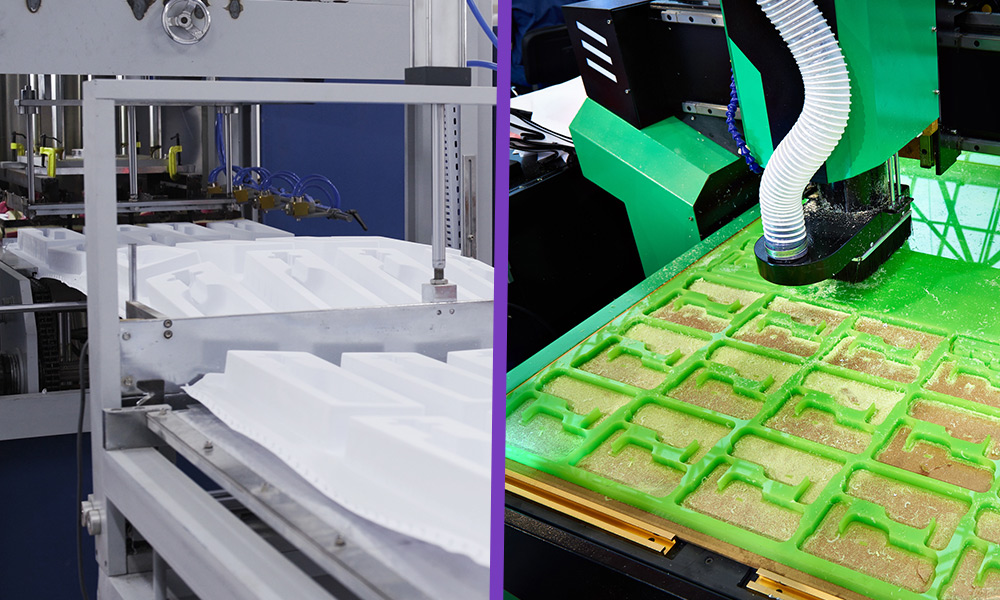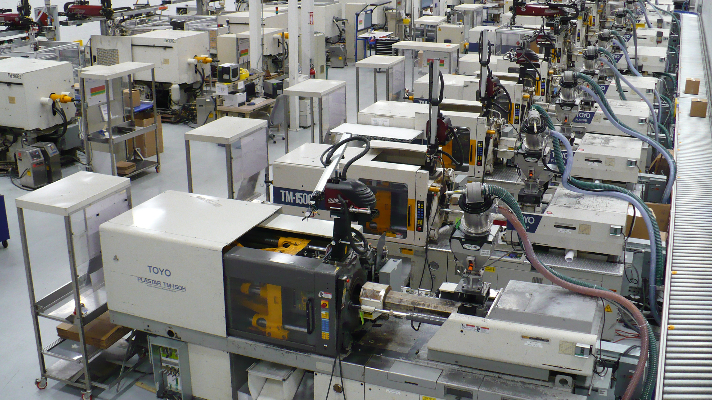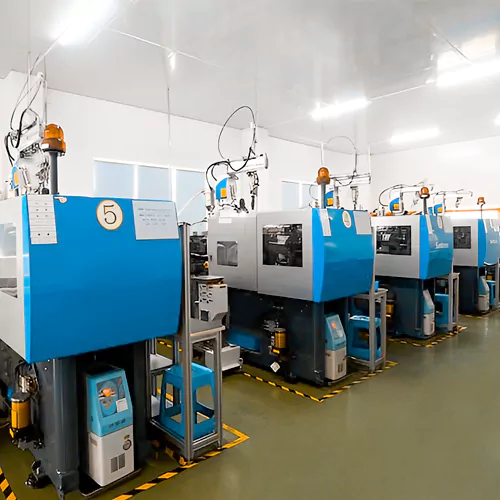Recognizing the Basics of Plastic Injection Molding Procedures
Plastic injection molding serves as a cornerstone of modern-day production, offering a methodical approach to generating complicated components with accuracy. Discovering these necessary aspects could reveal just how even minor adjustments can lead to substantial enhancements in production end results, increasing questions concerning the capacity for innovation in this well-known process.
What Is Plastic Injection Molding?
Plastic injection molding is a commonly utilized manufacturing procedure that transforms polycarbonate and thermosetting materials right into precise and intricate forms. This method is favored for its ability to produce high quantities of similar components with outstanding accuracy, making it a vital method in different sectors, consisting of automobile, durable goods, and clinical devices.
The procedure entails melting the selected plastic material and infusing it right into a mold and mildew under high pressure. The mold, created to the requirements of the desired part, enables the liquified plastic to materialize as it solidifies and cools. Once the material has solidified, the mold and mildew is opened up, and the finished component is ejected.
Plastic injection molding provides a number of benefits, consisting of lowered waste, uniformity in manufacturing, and the capacity to include intricate designs that may be challenging with other producing techniques. Furthermore, it sustains a broad variety of materials, each supplying special properties that can be customized for particular applications. As sectors proceed to introduce, plastic shot molding stays at the leading edge, allowing the advancement of sophisticated products that meet evolving customer needs.
The Shot Molding Process
The injection molding procedure is a sophisticated strategy that entails a number of crucial stages to produce high-quality plastic components. Plastic pellets are fed into a warmed barrel where they are thawed into a thick fluid. This molten plastic is then infused under high stress into a precision-engineered mold and mildew, which forms the material right into the preferred type.
As soon as the mold and mildew is filled up, the plastic is allowed to strengthen and cool down, taking the shape of the mold and mildew tooth cavity. Cooling time is critical, as it influences the cycle time and the final residential or commercial properties of the shaped part. After adequate cooling, the mold and mildew opens, and the ended up part is ejected making use of ejector pins.

Materials Used in Injection Molding
Various materials can be utilized in the injection molding process, each offering distinct homes that accommodate certain applications. One of the most frequently utilized materials include thermoplastics, thermosetting plastics, and elastomers.

Thermosetting plastics, like epoxy and phenolic materials, undertake a chemical modification throughout the healing process, leading to an inflexible, great post to read inflexible framework. These materials are optimal for applications calling for high heat resistance and architectural honesty, frequently utilized in auto components and electrical insulators.
Elastomers, including silicone and rubber-based products, give flexibility and durability. Their special residential or commercial properties make them appropriate for applications that require flexibility, such as gaskets and seals.
Additionally, specialty materials like bio-based plastics and composites are getting grip for their ecological advantages and boosted efficiency characteristics, broadening the range of injection molding applications in different markets. Comprehending the buildings of these products is crucial for selecting the suitable type for specific projects.
Advantages of Shot Molding
Shot molding attracts attention as a very reliable production process that offers various benefits for generating intricate components with accuracy. Among the most considerable benefits is the ability to develop detailed styles that would be difficult or difficult to achieve with other approaches (Plastic Injection Molding). The process permits tight tolerances and thorough functions, ensuring high-quality parts
Furthermore, injection molding is recognized for its fast production capacities, making it an optimal choice for high-volume production. When the mold is produced, parts can be generated rapidly, reducing preparations and increasing total efficiency. This performance not only lowers manufacturing costs yet also gives additional resources a competitive side out there.
The versatility of products used in injection molding better improves its allure. A large range of thermoplastics and thermosetting polymers can be employed, enabling suppliers to select products that finest satisfy their details demands, including adaptability, strength, and warm resistance.
Additionally, the process reduces waste, as excess product can usually be recycled and recycled. This sustainability facet adds to a decreased environmental influence, making shot molding a liable manufacturing choice. Generally, the benefits of shot molding make it a recommended approach for many industries.
Elements Impacting Item High Quality
While countless variables can affect item quality in injection molding, understanding these elements is essential for accomplishing ideal results. Key aspects include material selection, refining criteria, and mold and mildew layout.
Product choice plays a crucial function, as different polymers exhibit distinct homes that impact flowability, toughness, and thermal security. Inadequate material option can lead to defects such as bending or insufficient dental filling.
Processing parameters, including temperature level, stress, and cycle time, must be meticulously regulated. Variants in these settings can cause incongruities in component dimensions and surface area coating. Exceedingly high temperatures might trigger degradation of the polymer, while poor pressure can result in short shots.
Mold and mildew design is just as crucial, as it identifies the flow of the molten plastic and the cooling procedure. Poorly made molds might result in uneven air conditioning prices, leading to recurring anxieties and dimensional inaccuracies.

Final Thought
In verdict, plastic injection molding acts as a vital manufacturing process that enables the efficient production of high-quality components. Proficiency of the shot molding process, including the understanding of materials and the impact of numerous aspects on product quality, is essential for achieving optimum outcomes. The advantages of this method, such as cost-effectiveness and layout versatility, additional underscore its read this post here significance throughout several industries, strengthening its condition as a favored choice for high-volume manufacturing.
Plastic injection molding serves as a keystone of contemporary manufacturing, giving a methodical approach to generating complicated components with accuracy.Plastic injection molding supplies a number of advantages, consisting of decreased waste, uniformity in production, and the capacity to include detailed designs that may be testing with other making techniques (Plastic Injection Molding). As sectors continue to introduce, plastic injection molding continues to be at the leading edge, enabling the advancement of advanced products that fulfill developing customer demands
The shot molding procedure is an advanced technique that entails numerous crucial phases to generate high-grade plastic elements.In conclusion, plastic injection molding offers as a crucial production procedure that allows the reliable production of premium parts.
Comments on “Just How Plastic Injection Molding Drives Effectiveness in Automation”